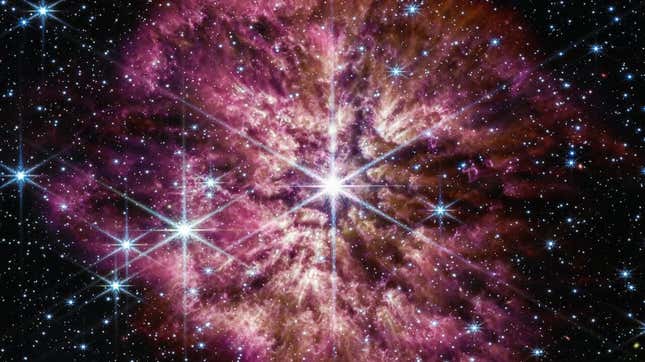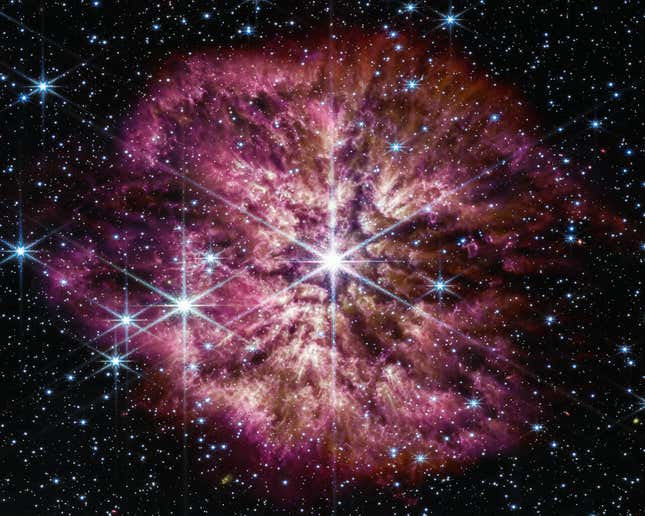

Newest Webb Image Is a Stunning View of a Star’s Penultimate Stage
source link: https://gizmodo.com/webb-space-telescope-wolf-rayet-star-image-1850225698
Go to the source link to view the article. You can view the picture content, updated content and better typesetting reading experience. If the link is broken, please click the button below to view the snapshot at that time.
Newest Webb Image Is a Stunning View of a Star’s Penultimate Stage

The Webb Space Telescope has produced a stupendous view of a Wolf-Rayet star, an extraordinarily bright object in the sky that (you may want to sit down) will soon die.
Wolf-Rayet stars are supernovae waiting to happen. They are stars that are generally much larger than our Sun but are rapidly losing mass as they age, according to the Center for Astrophysics | Harvard & Smithsonian. At the end of their life cycles, they burst outwards in luminous, space-time roiling supernovae.
The star recently imaged by the $10 billion space observatory is WR 124, a star 30 times the mass of our Sun that has so far shed 10 solar masses. It resides about 15,000 light-years away from Earth. In the image, luminous purple and yellow gas streams away from the central star at over 93,200 miles per hour.
The image is a composite taken by two Webb instruments, the Near-Infrared Camera (NIRCam) and the Mid-InfraRed Imager (MIRI). Imaging at both the near- and mid-infrared ranges allows Webb to capture different aspects of the object.
In the case of WR 124, NIRCam captured the stellar core and the gas in its immediate environs, while MIRI imaged the structure of the nebula (composed of gas and dust) surrounding it.

The same star was imaged by the Wide Field Planetary Camera 2 aboard the Hubble Space Telescope in 2015, in an update of an image first taken by the telescope in 1998. In Hubble’s view, the gas and dust surrounding the star are a vivid orange, as opposed to the luminous purplish-pink featured in the Webb image.
Looking at WR 124 with Webb gives astronomers a better understanding of how dust is produced and distributed in such dynamic environments.
Webb is a jack-of-all-trades, imaging a diversity of distant objects from its roost about 1 million miles from Earth. Earlier this year, the telescope produced a stunning image of countless galaxies, a sweeping shot that served as a reminder of the sheer size of space and the amount of matter that occupies it.
More: Why Webb Telescope’s Image Processors Are Astronomy Superstars
Recommend
About Joyk
Aggregate valuable and interesting links.
Joyk means Joy of geeK